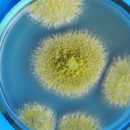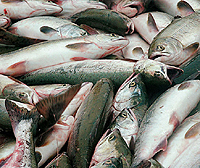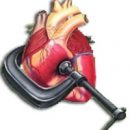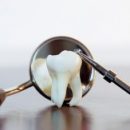What is ornithosis? What form of ornithosis exist? What complications of ornithosis are? How to diagnose, treatment and prevention of ornithosis? Answers to these questions you will find in the article.
Content
Ornithosis
Ornithosis (Synonym: Psitacosis) - acute infectious disease,
characterized by fever, general intoxication, lung damage, central
nervous system, increase in liver and spleen.
The causative agent of the disease is chlamydaci (chlamydia psittaci),
In the human body develops intracellular, in the external environment remains
up to 2-3 weeks.
The reservoir of the pathogen and the source of infection are home
And wild birds. Birds are the greatest epidemiological importance -
especially duck and turkey; Indoor birds - parrots, wavy parrots, canary;
Urban pigeons.
Most susceptible to face disease, constantly contacting
Birds: Poultry Facility Employees, Meat Processing Plant, and DR. With domestic infection
Basically, single diseases are observed, but family flashes may be
(more often 1-2 weeks after the acquisition of infected birds). Disease
more often found in the cold season.
Infection in most cases occurs aerogenic (air-dust)
By inhalation of dust containing chlamydia (dried outfackers
birds, as well as isolation from beak, polluted fluff particles). Patients with ornithosis
dangers for others do not represent.
Infection penetrates the body through the mucous membrane of the respiratory
paths. The causative agent is introduced into small bronchi and bronchiols, the smallest dust
Particles can reach Alveol, causing an inflammatory process. Then chlamydia
penetrate the cage, where their reproduction begins. Very fast chlamydia penetrate
in blood, causing symptoms of general intoxication and defeat various organs -
Liver, spleen, nervous system, adrenal glands. Incication is due
toxic influence of the pathogen itself and toxin produced by him.
The gateway of the infection is the mucous membrane of the digestive
tract - small intestine. In this case, the pathogen also enters the blood,
causing intoxication and amazing a number of organs and systems, but at the same time
it happens.
Immunity after transferred acute infection short-term
and unstable, may be cases of repeated diseases.
The incubation period fluctuates
from 6 to 17 days (more often 8-12 days). Distinguish the acute and chronic flow of ornithosis.
In turn, acute ornithosis can flow in typical (pneumonia) form and
Atypical (meningopnemia, ornithosis meningitis, ornithosis without lung damage).
Unnithous hepatitis, ornithous endocarditis can be attributed to rare atypical forms.
Chronic form of the disease can flow as chronic
Ornithous pneumonia and as chronic ornithosis without lung damage.
Acute and chronic ornithosis
Acute ornithosis. Typical form of ornithosis begins
acute - among full health and well-being quickly, with chills, rises
Body temperature (above 39 degrees). From the first hours of the disease, the total appear
Weakness, Breakability, Strong Headache, Pain in the back muscles and limbs.
Appetite is lowered by almost all patients. In the first days of illness, there is practically no
non-nose, nasal congestion, dryness and throat, redness, and
Also signs pointing to the defeat of the lungs and pleura. Liver and spleen
In the first days are not yet increased.
About 2-4 days of illness appear signs of lesions
Lungs - dry cough, sometimes stitching chest pain, increasing with breathing,
Then a small amount of mucous-purulent sputum begins to stand out, sometimes - with blood admixture. Inxication and fever are held at the same level or
somewhat increasing.
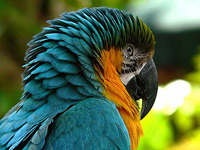
At the end of the first week, most patients have a liver
and spleen, while jaundice does not arise. Inxication is observed until the 7-10th
sickness of the disease, then begins to gradually decrease. For this disease
It is characteristic that even after the normalization of body temperature, the health of the patient
long remains bad. There is a weakness, vegetative-vascular disorders,
Fast fatigue even with small exercise.
With severe and moderate formations of ornithosis full recovery
forces comes only in 2-3 months. In some patients, the disease can
Take a chronic flow.
Atypical course of acute ornithosis can manifest themselves meningeal
syndrome on the background of ornithous pneumonia - meningopnemia that combines
All signs of a pneumonic form of ornithosis with a picture of serous meningitis. Disease
Leaves for a long time, the fever is preserved up to 3-4 weeks, resistant changes
in the central nervous system is not observed.
Ornithous meningitis is one of the atypical forms of acute ornithosis, it is rare.
It begins acutely with an increase in body temperature and the appearance of symptoms of intoxication.
Within the next 2-4 days, meningeal symptoms are joined (strong
Headache, muscle rigidity Nallenka, positive symptoms of Kerniga, Brudzinsky
and etc.). There are no changes in the lungs.
Ornithoses without lung damage begins acutely with temperature increase
Body (usually above 39°C) and the appearance of signs of general intoxication. Patients complain
on headache, lowering appetite, latency of the chair, sometimes bringing pain in
All tele. By the end of the first week, the increase in liver and spleen.
In addition, acute ornithosis can occur without any clinical
manifestations - innaprant. Such a form of illness is more often observed in persons
young age with good organism reactivity.
Chronic ornithosis. Chronic forms are developing
After transferred acute ornithosis, more often with incorrect treatment. Chronic ornithous pneumonia is accompanied by symptoms
Bronchitis. Temperature of the body does not exceed 38 degrees, while inxication is preserved
(Weakness, Fast fatigue). The disease can last 3-5 years and more.
Chronic ornithosis can occur without lung damage.
Manifests itself in the form of a long-term increase in body temperature not higher than 38 degrees,
Symptoms of chronic intoxication, vegetative-vascular disorders, increase
Liver and spleen. Can last for many years.
Complications of ornithosis
The most dangerous complications are
Myocarditis (inflammation of the heart muscle) with the development of acute heart failure,
thrombophlebitis (the formation of blood clots in the veins) with the subsequent thromboembolism of the pulmonary
Artery, hepatitis. When the secondary infection is attached, purulent otitis occurs
(Ear inflammation), neuritis.
In the event of a disease in a pregnant woman, intrauterine
infection does not occur, developmental deformities do not arise. Heavy flow
Diseases in early pregnancy can lead to spontaneous abortion.
Diagnosis, treatment and prevention of ornithosis
Disease recognition is based on epidemiological
- Contacts with homemade and wild birds (hunters), indoor birds (especially
Wavy parrots and parrots), urban pigeons and clinical data.
For diagnosis, it is important that patients with the pulmonary forms of ornithosis
There are no signs of defeat of the upper respiratory tract (rhinitis, pharyngitis, laryngitis
and tracheitis). Characterized by the increase in liver in most patients.
Laboratory Diagnostic Methods: IFA Immuno Educational Method
- Identification of chlamydia for the presence of specific antibodies in the blood, the most sensitive
Method - identification of chlamydia by a specific enzyme DNA molecule in a smear
(PCR, polymerase chain reaction).
Tetracycline antibiotics prescribe:
Vibreamicin, doxycycline, tetracycline of 0.3-0.5 g 4 times a day to 4-7 days
normal temperature, if necessary, treatment continues until the 9-10th day
Normal temperature. In case of intolerance of drugs of tetracycline group
Lewomycetin and erythromycin can be prescribed, but their effectiveness is somewhat less.
Penicillin, streptomycin and sulfanidamides (bispetol) with ornithosis are not effective.
Fighting ornithosis among domestic birds,
Contact the number of pigeons, contact restriction with them. On poultry farms
and enterprises involved in the processing of the pen and fluff must be carried out
Sanitary and Veterinary Events. When importing into the country of birds should be applied
Quarantine measures. Effective vaccine for the prevention of ornithosis does not exist.

